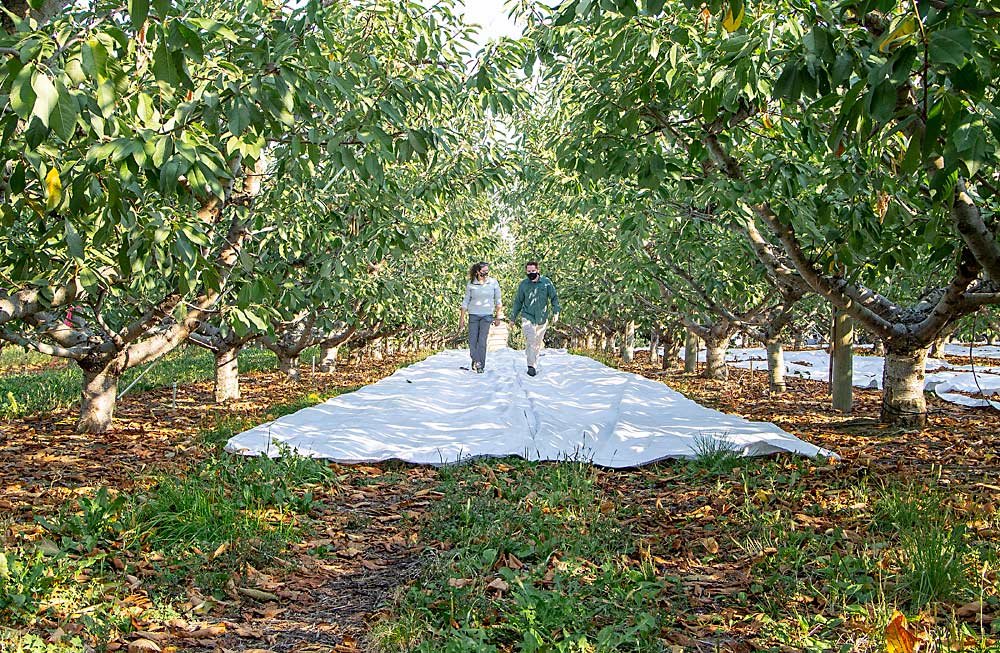
High levels of X disease pressure in many parts of Washington’s Yakima Valley make every leafhopper found in a cherry block a potential threat.
And as such, there is no economic threshold for managing these vectors of an incurable disease, according to Tobin Northfield, a Washington State University entomologist. That’s why his lab is examining deterrent strategies: to try to give growers another management tool.

“Can we protect these trees by stopping leafhoppers from landing on them?” asked Adrian Marshall, a WSU postdoctoral researcher, in discussing last year’s trial that looked at kaolin clay and reflective fabric applications in cherry orchards after harvest, when leafhopper activity is highest. He found that both strategies reduced leafhopper catch on sticky-card traps, but researchers want to repeat the trials this season to confirm the results.
The deterrent research marks one piece of the ongoing efforts to learn as much as possible about the leafhoppers that transmit X disease — Colladonus reductus and C. geminatus. Insights into their life cycle, host plants and habits could help the cherry industry move from blanket programs of spraying every two to three weeks, from harvest until November, to more targeted control programs that will protect product efficacy.
“You can very easily start using up a lot of your pesticides,” with that intense of a management program, said Garrett Bishop, who works in quality services for G.S. Long Co. and is a member of the industry’s Little Cherry Disease Task Force. He helped WSU set up some of its deterrent trials, which he said were definitely worth investigating. “It’s more barriers to reduce the risk of the leafhoppers spreading the pathogen,” he said.
Better understanding of the pathogen-leafhopper dynamic should benefit growers, Northfield said. It’s already clear that it takes about 30 days for each new generation of leafhoppers that feed on infected trees, weeds or other plants to become infectious vectors, he said. That gives growers a window of time for effective control.
And the less disease that’s in the environment, the less risk each leafhopper poses.
“The most important thing is growers removing trees to get the inoculum out, so if the leafhoppers have no infected trees to pierce and suck on, that’s going to reduce the risk a lot,” Bishop said.
Deterrent details
Rolling out reflective fabric provided the best leafhopper deterrent, according to trap catch data from trial blocks in commercial orchards in both the Yakima Valley and Wenatchee area.
“In some cases, it knocked (trap catch) down to zero,” Marshall said when he presented his findings to the Washington Tree Fruit Research Commission, which funded the project. “It shows that the ground cover is very important to leafhopper life.”
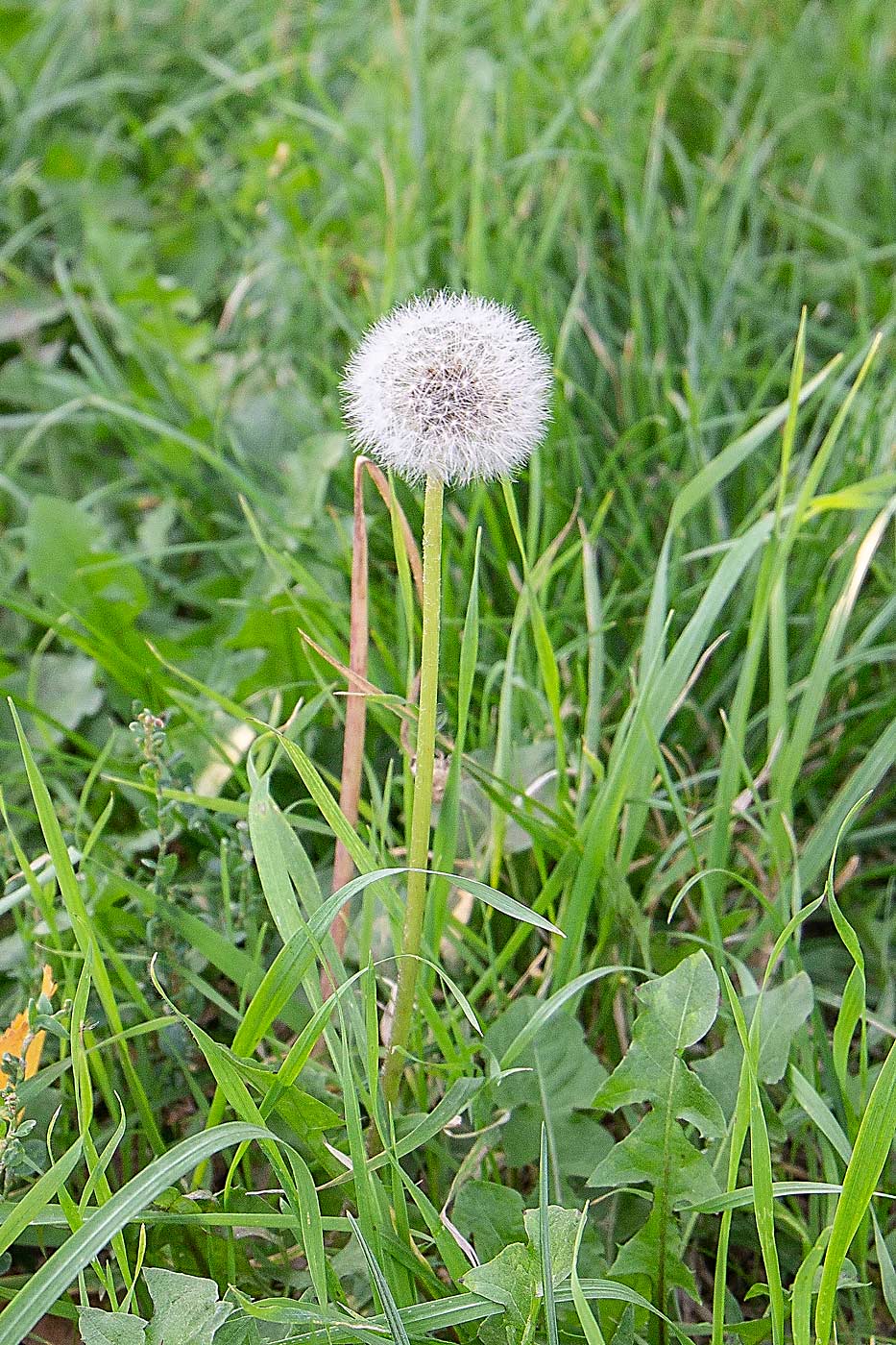
The reflective fabric seems to work because it covered up the orchard ground cover — specifically, the broadleaf weeds the insects prefer — not because of its reflective properties in a shady cherry orchard.
Perennial weeds such as dandelion, mallow and clover pose a particular risk, because leafhoppers really like them and the weeds can serve as a source of the X phytoplasma from year to year, Northfield said. Feeding trials in the lab show the insects need diverse diets and they like mallow even more than they like cherry and peach trees.
When researchers need to catch leafhoppers for trials, they head straight for weedy areas such as those around the irrigation equipment, said Louis Nottingham, also a WSU entomologist.
Researchers also deployed their sticky-card traps at 2-foot, 4-foot and 6-foot heights to understand where the leafhoppers spend the most time. They caught far more in the lower traps, Northfield said, another sign that the ground cover is attracting them.
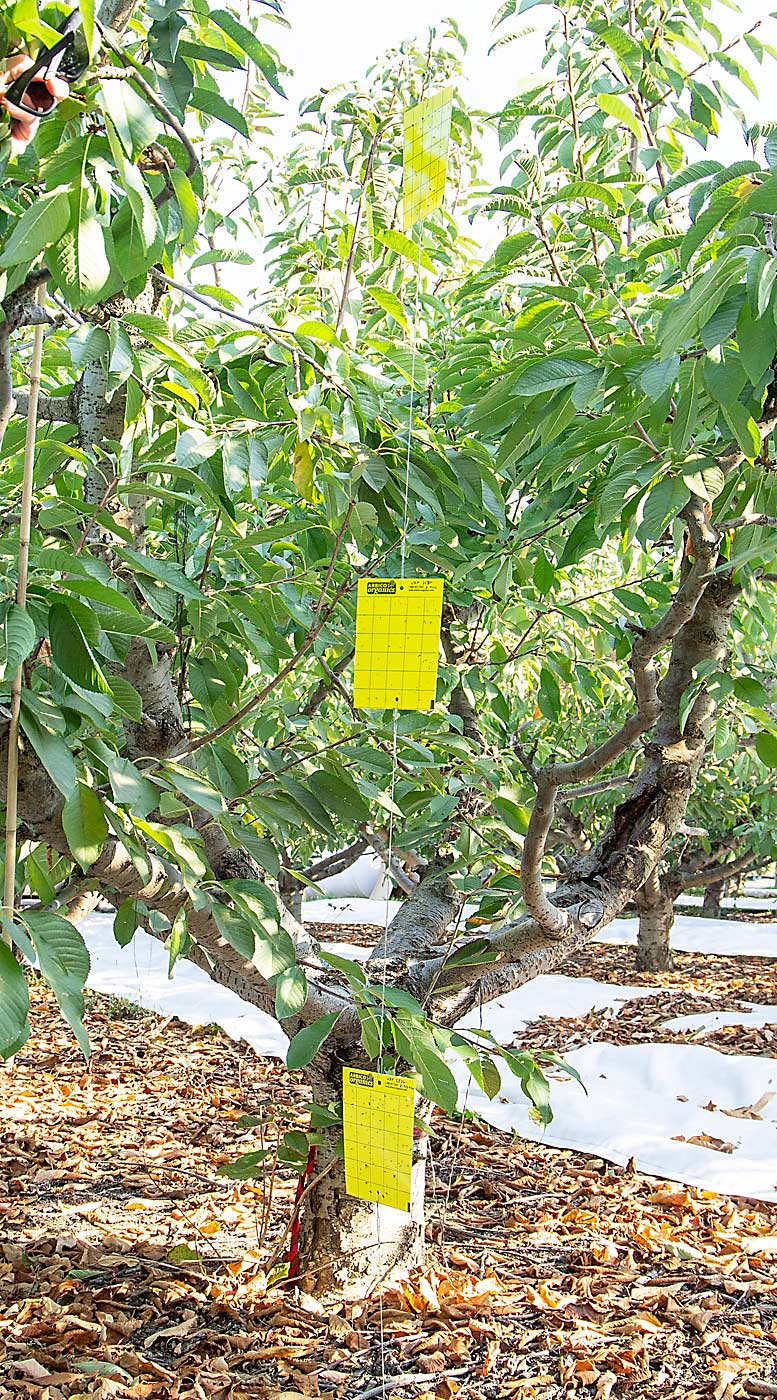
Actually deploying reflective fabric as a leafhopper deterrent seems like an expensive and inconvenient approach, said Teah Smith, entomologist and ag consultant for Zirkle Fruit, who hosted one of the deterrent trials in a Wenatchee-area orchard.
“But what I think has been great about this experiment with Extenday is, although we are not likely to implement it in the field, it does show us the importance of managing the ground cover,” she said.
There was one block in the trial, not hers, where the WSU researchers didn’t catch a single leafhopper. That block has all grass ground cover, no weeds, Smith said, which she doesn’t think is a coincidence.
In the first year of data, coating the trees with Surround (kaolin clay) once a month also provided a strong deterrent effect, according to trap catch. At $75 to $100 an acre, that’s something Smith said she could see implementing.
In fact, some cherry growers already apply Surround shortly after harvest to reduce the risk of heat-induced doubling, so in those cases, it could offer a dual benefit, Bishop said.
Northfield and Marshall decided to try the kaolin clay because it’s been shown to work as a deterrent to the glassy-winged sharpshooter (Homalodisca coagulata), a leafhopper cousin that transmits the Pierce’s disease phytoplasma in California vineyards.
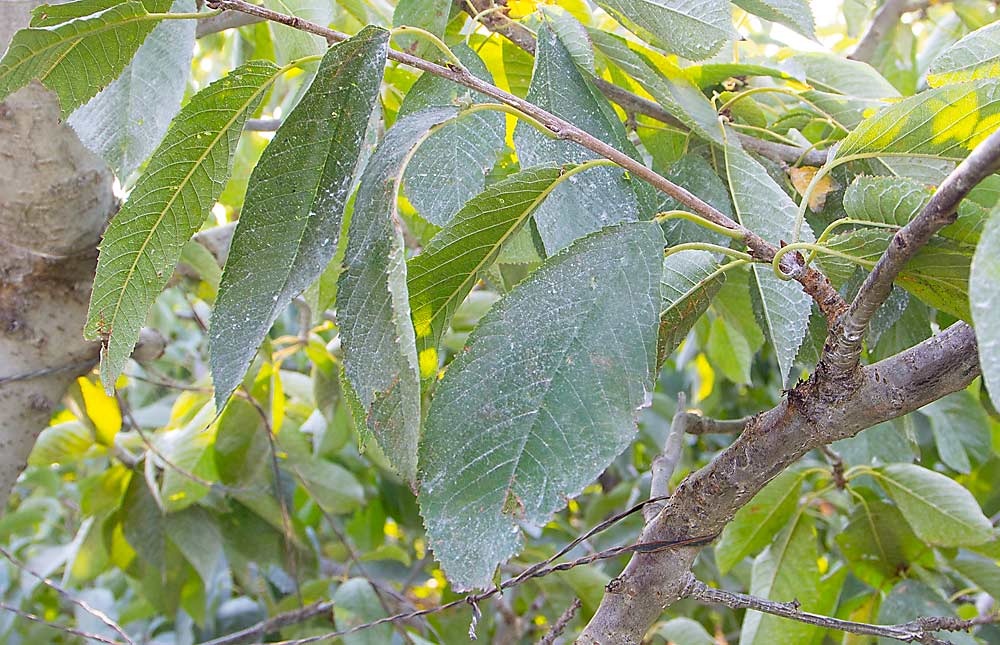
Bishop said if the data Northfield and Marshall collect this year show the same strong deterrent effect as last year, he expects more growers will want to try it.
Insecticides and life cycles
While researchers refine deterrent strategies, the best available management remains an aggressive spray program.
Nottingham conducted lab trials last year to assess insecticide efficacy — a process that involved catching lots of wild leafhoppers and trying to keep them alive long enough to kill them. For conventional growers, he found Asana (esfenvalerate), Actara (thiamethoxam) and malathion all had 100 percent mortality. Transform (sulfoxaflor) offered near 90 percent mortality.
For organic growers, two pyrethrin-based formulas, PyGanic and Azera, showed quite good performance, Nottingham said.
He also looked at the potential of using systemic insecticides via soil drench and found that both imidacloprid and thiamethoxam work against leafhoppers. It’s a strategy that will need more research to understand delivery mechanisms, rates and timings, because commercial cherry trees are much larger than the greenhouse seedlings he used in the trial. But Nottingham thinks the systemic application might be especially useful for nursery growers who need to protect small, nonbearing trees.
There’s no recommendation yet for using trap counts to optimize application timing, but that’s the next step the industry wants to see, Smith and Bishop said.
“I don’t want to spray any more than I absolutely have to,” Smith said, citing the need to keep costs down and protect both natural enemies and insecticide modes of action. “Otherwise, it’s going to be like SWD and we’ll run out of materials we can use against them.”
The sticky-card traps work well for adults, but she plans to start using sweep nets this year to look for nymphs. It may make sense to base spray timing off the nymph populations, Smith said.
“We want to get them before they start transmitting,” she said.
Looking at the leafhoppers’ life cycle, Northfield said that C. reductus appears to now have three generations in the Yakima Valley, unlike the historical data that showed only two. He still only found two generations in North Central Washington.
“This could be really important in the resurgence of this disease,” he said. •
—by Kate Prengaman
Editors’s note: This article has been updated from the print version to correct Adrian Marshall’s title.

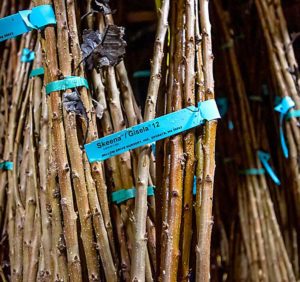





Leave A Comment